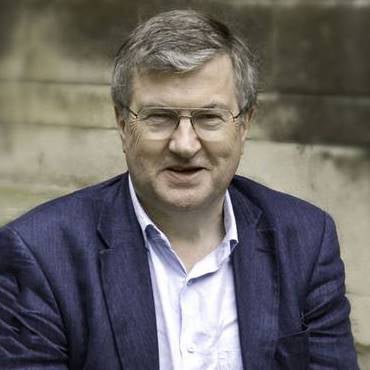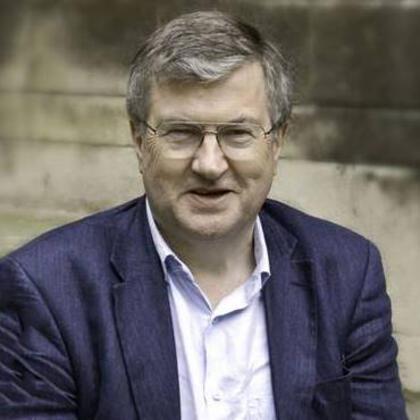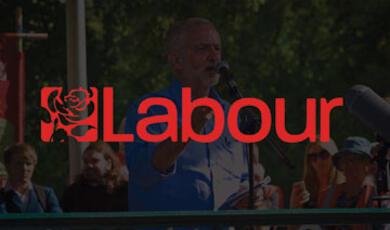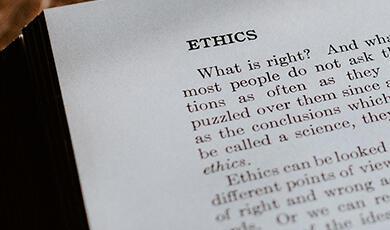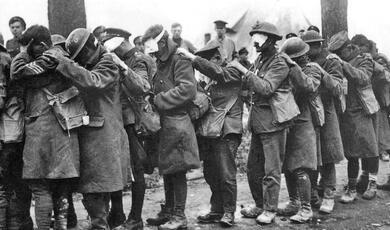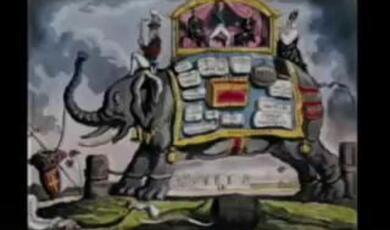War and Peace in Europe from Hitler to Putin
Share
- Details
- Text
- Audio
- Downloads
- Extra Reading
How can we understand the war in Ukraine in the light of European history over the past century? Is Putin a '20th-century Hitler' as some have called him? What are his aims, and how do they compare with those of the Nazis during the Second World War? Why are the Ukrainians resisting the Russian invasion so fiercely?
This lecture attempts to explain the nature of the current conflict by setting it in its historical and geopolitical context.
Download Text
War and Peace in Europe from Hitler to Putin
Professor Sir Richard Evans
Tuesday 27 September 2022
The best part of a yearn has now passed since the Russian invasion of Ukraine on 24 February. The imbalance between the two countries in military strength was striking. The Russians invaded from north and south, and in the east they advanced from areas they had already been occupying since 2014. But they met with unexpectedly tough resistance. Equipment was destroyed or seized by Ukrainians. Russian armour got bogged down, and tanks and military equipment were seized or destroyed by the Ukrainians. A huge column of troops and armour advancing on the capital city, Kyiv, from the north, was brought to a halt and forced to disperse. Putin was forced to abandon his attack on Kyiv and focus instead on the south-east, where the conflict continues. Russian forces went over to continuing and largely indiscriminate artillery and aerial bombardment, causing massive damage to civilian areas. While the Russians continue to consolidate their position in the eastern Donbass region, they have clearly abandoned their original expectation of conquering the entire country in a short space of time. We are in a conflict in which, as in World War I, the defence has the upper hand, a war of attrition in which neither side has made much progress. Ukraine is fighting on its own territory but is succeeding in destroying bases and supplies across the border. The Russian bear has bitten off more than it can chew.
This isn’t just a regional conflict, it’s having global effects. To begin with, there has been a huge outflow of refugees from Ukraine, over six million by June this year. This has had a massive impact on Eastern European economies in particular. And then, Ukraine, the ‘bread-basket of Europe’, has been effectively blockaded for several months not to mention the damage done to its agriculture by the war. Many countries depend to a considerable degree on Ukrainian produce for their food supplies, and supplies have been interrupted and prices driven up. Russia’s oil and natural gas resources have been vital in supplying other European countries and the blockade of Russian trade, together with retaliatory measures, has led to a massive hike in energy prices. Finally, NATO countries, especially Germany, have been forced to re-examine their defence policies and increase their expenditure on arms. While Russia has depleted its resources of manpower and matériel and is increasingly dependent on out-of-date military equipment, Ukraine is almost entirely reliant on advanced weaponry supplied from outside, which carries with it a serious risk of the war escalating as the Russians have so far failed to cut off these supplies. All this means that the Russian invasion of Ukraine has caused the most serious crisis in world politics for many years.
So far, so familiar. Every day we have been deluged with information about the latest situation. In an age of 24/7 news media the dramatic events have been on our screens day and night and there’s no excuse for not knowing what’s going on. What I want to do this evening, therefore, is to provide some historical perspective. What are the long-term factors, if any, behind the conflict? Are there any historical parallels? Do we have any reason to believe the conflict can be resolved, and if we do, when, and how? History, mobilized into propaganda on both sides, has played a major part in reporting of the conflict. How accurate is the history we’re being shown? What exactly is new about the present war?
Let me begin by reminding you of where Ukraine is, and where it’s been over the past centuries – a more complicated question than you might think. To begin with, Ukraine hasn’t been an independent, sovereign state for very long. In the early modern period, Ukraine began to emerge from the break-up of the Polish-Lithuanian Commonwealth. Through most of the 18th and 19th centuries it was part of Tsarist Russia. Then with the Bolshevik Revolution which overthrew the Tsar, there was a brief civil war, after which Ukraine became part of the Union of Soviet Socialist Republics. But in World War II it changed hands again; most of the western part was under German occupation from 1941 to 1944, before reverting to Soviet control in 1945. In 1954 the Soviet leader Nikita Khrushchev ceded the Crimea to Ukraine – he had been the Soviet commissar in Ukraine before and after the war. Since then, Putin’s Russia has reabsorbed the area, along with parts of south-eastern Ukraine, though this has never been internationally recognized.
So what are the historical roots and antecedents of the present conflict? Almost as soon as Vladimir Putin’s forces invaded Ukraine, political pundits began comparing him with Hitler. Both men imposed dictatorial rule over their respective countries, both men suppressed dissent and eliminated independent media, both men had no hesitation in murdering people they considered a threat to their rule. Both Hitler and Putin invaded a series of neighbouring countries, both used lies and disinformation to justify their actions, both used a symbol – in Putin’s case ‘Z’, in Hitler’s the swastika – to advertise support for their aims. Both men had no hesitation in causing death and destruction on a massive scale to further their ends.
Jonathan Katz, Washington-based director of ‘Democracy Initiatives’, has said that Putin ‘is this century's equivalent to Hitler’. Putin’s character, he says, ‘disturbingly mirrors traits of Hitler’. ‘For me’, the former Director of US National Intelligence James Clapper has told CNN, Putin is ‘a 21st-century Hitler’, a phrase used by a variety of commentators ranging from the former Irish Taoiseach Leo Varadkar to the Ukrainian Minister of Defence. The British Liberal Democrat politician Norman Baker has claimed in the Daily Mail that ‘everything Vladimir Putin does echoes Adolf Hitler’. Even the Prince of Wales, speaking to a Jewish Holocaust survivor in Canada in 2014 after the Russian invasion of Crimea, said that ‘Putin is doing just about the same as Hitler’. Critics of the West’s cautious approach to Putin’s territorial aggrandisements routinely invoke parallels with the Munich Agreement of 1938, in which Britain and France sought to appease Hitler and avert a general war by forcing Czechoslovakia to give in to the Nazi dictator’s demands for a large chunk of its own territory.
Of course, as Jewish groups have pointed out, Putin has not established extermination camps or gas chambers as Hitler did to carry out the mass murder of European Jews. But Ukraine’s President Volodymyr Zelenskiy has directly called the indiscriminate bombardment of his country’s major towns and cities ‘a genocide’. Poland’s President Andrzej Duda has echoed this by asserting that the Russian invasion bears ‘the features of a genocide—it aims at eliminating and destroying a nation’. The mounting evidence of indiscriminate massacres of civilian men, women and children by the retreating Russian armies in Bucha and other Ukrainian towns is already impossible to ignore or – despite risible Russian efforts to do so – explain away. Genocide it undoubtedly is: these people are being killed because they are Ukrainians, and for no other reason.
Genocide was at the heart of the Nazi project. This year sees the 80th anniversary of the Nazis’ ‘General Plan for the East’, a proposal for the mass murder by disease, starvation, neglect, and ‘extermination through labour’ of up to 45 million ‘Slavs’, in order to make way for German settlement across East-Central Europe. In its final version, completed in June 1942, the document, which first came to light in 1957, laid bare the full extent of the most radical genocidal programme ever devised. Over the next 30 years, assuming a German victory in the war, the Nazis proposed to ‘liquidate’ 50% of Latvians, Estonians and Czechs, 75% of Belarusians, and 85% of Lithuanians and Poles. The Ukrainians were to disappear altogether: 35% of them, deemed racially suitable, were to be ‘Germanized’, the rest were to be eliminated.
Fortunately the plan never had a chance of becoming reality, but the genocidal attitude of the Nazis towards the millions they regarded as Slav ‘subhumans’ found expression in the killing of thousands of Polish intellectuals and the deliberate starvation of more than three and a quarter million Red Army soldiers taken prisoner, penned into huge enclosures on the East European plains, and left to die without food, shelter or medication. Anyone who thinks that Ukrainians are ‘Nazis’, or that Stalin was the principal enemy of the Ukrainians and the other inhabitants of East-Central Europe, needs to read this shocking document. Of course, Stalin also ordered the shooting of some forty thousand Polish officers captured when the Red Army took over Eastern Poland in fulfilment of the infamous Molotov-Ribbentrop pact, signed in August 1939, and deported thousands of mainly upper-class Poles to Siberia, but these terrible crimes were committed in the name of class warfare rather than ethnic hatred. For the victims, of course, it made little difference; nevertheless, the almost unimaginable scale of the ‘General Plan for the East’ puts it in a category of its own.
The Nazis’ genocidal intentions went far beyond the elimination of ‘subhumans’ who stood in the way of German settlement. Genocide comes in many varieties and degrees, and the mass murder by the Nazis of nearly six million European Jews was qualitatively different from the vast extermination programme contained in the General Plan for the East. From the very beginning, the Jews were for the Nazis the ‘world-enemy’, dedicated to destroying Germany and the Germans in a huge global conspiracy aimed at ruling the world. Hitler believed every Jew was predestined by their ‘racial character’ to work towards this end. Nazi wartime propaganda showed the three most powerful enemies of Germany, the British Empire, the Soviet Union and the United States of America being steered from behind by malevolent Jewish conspirators.
It was this belief that led the German invaders of East-Central Europe to go out of their way to degrade and humiliate the Jewish inhabitants of the area, forcing Jewish elders to dance in the town squares until they collapsed from exhaustion, Jewish girls to clean latrines with their blouses, and committing similar atrocities too revolting to detail. It was this belief that caused the Nazis to try and eliminate the Jewish population of Europe in the quickest way possible, in contrast to the longer-term mass extermination planned for the region’s Slavs, who were seldom treated with the grotesque and elaborate sadism reserved for the Jews.
In the light of these facts, few things in Vladimir Putin’s propaganda seem more absurd than his claim that Ukraine is ruled by a clique of ‘Nazis’, not least because the Ukrainian President is himself Jewish. That’s not to say that there are not or have never been Nazis or Fascists in Ukraine. In particular, a wartime partisan leader, Stepan Bandera, who fought against the Soviet Union’s invasion of Ukraine, was deeply antisemitic and had ties to the Nazis. Hence the Russian claim that they invaded Ukraine in order to combat ‘Banderists’. There is a far right in Ukraine, and to its members, Bandera is a hero. And one element in the Ukrainian military resistance to the Russian invasion, the Azov Battalion, has its roots in an independent ultra-right, pro-Nazi paramilitary movement. For these men, the Russians are the true enemy, most of all because of the deliberately induced famine of the early 1930s, and many on the Ukrainian right, including the pro-western government in power a few years ago, have attempted to give the famine equal status with the Holocaust by providing it with a similar name – ‘Holodomor’ – and claiming that its victims numbered six million or even more. Since the war began, however, the Ukrainian government has taken steps to swamp the neo-Nazi element in the Azov Battalion and it’s now reckoned at about 20 per cent. And of course it’s only one small element in the Ukrainian army.
The Ukrainian fight for survival, it’s important to remember, is a fight for democracy, a fight for the Ukrainian people’s right of self-determination. It’s a fight against a regime in Russia that has extinguished democracy and crushed civil rights, free expression, independent news media and all political opposition. Putin looks back to World War II as a model for the war against Ukraine, and bases it on an appeal to Russian patriotism. He has sanitized all aspects of the Russian past, from Tsarism to Stalinism, in his bid to boost patriotic sentiment and by extension support for himself. Putin’s regime emerged out of the unrestrained greed of the transition from communism to capitalism in the 1990s, a transition that created the billionaires we know as ‘oligarchs’; it’s an ultra-capitalist regime, a kleptoctracy that’s corrupt to the core. It’s a system that found imitation in the corruption that riddled the Ukrainian political system after independence and is still very much present, though at the moment it’s been forced to take a back seat as the struggle for survival against Russia dominates everything.
Unlike Hitler, Putin does not think of Ukrainians as subhumans who have no right to remain alive, let alone a malignant global threat to the existence of his country. In fact, he thinks of them as Russians. On 18 March 2014, celebrating the annexation of the Crimean peninsula from Ukraine, he declared that Russians and Ukrainians were ‘one people. Kiev’, he went on, harking back to the Middle Ages, ‘is the mother of Russian cities.’ In February 2020 he repeated his belief that Russians and Ukrainians were ‘one and the same people’ and alleged that Ukrainian national identity was the creation of malign foreign influences. There was no Ukrainian state; it was a fiction. It followed that apart from the tiny minority of ‘Nazis’ who ruled them. Ukrainians would welcome the Russians with open arms as they liberated them from foreign occupation.
So Russian military conscripts were not prepared in advance for the invasion. They were quickly disillusioned as they encountered unexpectedly stiff resistance from the Ukrainians. Since the invasion, they have made only very slow progress in some border regions, and none at all in others. In some locations they have been beaten back by Ukrainian forces. Civilians in occupied towns and villages have come out with Ukrainian flags to demonstrate against the invaders. Artillery bombardments and air strikes have inflicted massive damage on the physical fabric of many Ukrainian towns and cities but they do not seem to have weakened Ukrainian resistance; if anything, they have strengthened it.
NATO and the EU, bystanders when Russia occupied the Crimean peninsula and then the eastern borderland provinces of Ukraine, have surprised Putin by taking strong and concerted action to impose severe sanctions that are already having a damaging effect on the Russian economy. The expected swift occupation of the entire country, followed by the rapid removal of Zelenskiy and his replacement by a Russian puppet, has not happened. For Putin and his regime, this is a military and political defeat of humiliating proportions. Russian forces are recognising this embarrassing reality and have withdrawn from central Ukraine to consolidate their position in its eastern provinces. Here their task is easier. If you look at a linguistic map of Ukraine, you will see that the eastern provinces are dominated by Russian speakers, unlike the central and western parts, where speakers of Ukrainian dominate. Ukrainian isn’t a dialect of Russian, but a separate language, more closely related to Belorusian, with a distinct grammar and spelling (which we’ve had to learn by speaking Kyiv the Ukrainian rather than the Russian way, Kyiv rather than Kiev, Odesa with one ‘s’ and so on. As a result of decades of domination by Russia, many if not most Ukrainians can speak Russian, but there’s no doubt they have a distinctive culture and identity – an identity that Putin is determined to obliterate in the Eastern provinces.
It is here, if anywhere, that the parallel with Hitler’s invasion of the Soviet Union can be found. For Hitler also expected a swift and easy victory as he sent his armies – a huge force, numbering more than three and a half million men, with thousands of tanks, self-propelled guns, armoured vehicles, combat aircraft and artillery – across the border of Nazi-occupied Poland on 22 June 1941. So confident was Hitler that the entire edifice of Soviet society, which he conceived of as a vast mass of ignorant and subhuman Slavic peasants ruled by a tiny clique of manipulative but unpopular Jewish Bolsheviks – would collapse, that he did not even bother to equip the troops with winter clothes. At first, his confidence appeared to be justified. Along a thousand-mile front, the German and allied armies advanced at breakneck speed, encircling and capturing or killing hundreds of thousands of Red Army soldiers. Hitler and his generals were euphoric. ‘It's really not saying too much’, Franz Halder, the chief of the German army supreme command noted in his diary on 3 July 1941, ‘if I claim that the campaign against Russia has been won in 14 days.’
But Halder and his master had miscalculated. As Ukrainian peasants greeted the invading troops with the traditional welcome offerings of bread and salt, expecting liberation from the horrors of Stalin’s rule, they were met with more horrors, as the Germans looted and burned their way through the countryside, reduced towns to rubble, and met even minor acts of resistance with mass executions and the torching of entire villages. Soon, heartened by Stalin’s abandonment of Bolshevik rhetoric to call on people to fight the Germans in the spirit of Russian patriotism, partisan groups were springing up everywhere, as Stalin’s generals mobilised military reserves and brought them to the front. By early August, General Halder was confessing in his diary that ‘we have underestimated the Russian colossus’. The Soviets, unlike the Germans, seemed to have limitless reserves of men and equipment. Reinforcements kept on arriving to take the place on the battle front of the hundreds of thousands captured or killed.
Worse was to come for the Germans. When the autumn rains arrived, their armies became bogged down in oceans of mud. Soon, the Russian winter was beginning to bite, with temperatures plunging to 40 degrees below zero. Such was Hitler’s overweening confidence, born of his continuing contempt for the ‘Slavs’, that he ignored all these problems. ‘Never before’, he proclaimed on 8 November 1941, ‘has a giant empire been smashed and struck down in a shorter time than Soviet Russia’. But he was living in a fantasy-world. His troops were tired after months of continual advance, they were ill equipped for a winter campaign, and their numbers were depleted by continual counter-attacks launched by the Red Army. Disaster now loomed.
When the Soviet general Georgy Zhukov, bringing fresh reserves across from the East, launched a counter-attack, the Germans were forced back. In the terrible winter conditions, they began to freeze to death in their thin summer uniforms. Hitler’s Propaganda Minister Joseph Goebbels launched a massive campaign to get German civilians back home to send winter clothing to the beleaguered army. But it was too late. Under the strain of defeat, one senior German general after another suffered a heart attack or a collapse in health and resigned, including Halder himself. Hitler regarded anything other than uncompromising resistance to the advancing Russians as cowardice in the face of the enemy. Any general who ordered a strategic withdrawal in the interests of preserving the lives of his troops was met with instant dismissal. Furious with his senior officers, Hitler took over as commander-in-chief of the army himself. The following months in 1942 saw the German forces advance once more in the East, but it was a false dawn: in the winter of 1942-43, the Battle of Stalingrad sealed their fate and inaugurated a period of continuous retreat that ended in 1945 with the Soviets occupying Berlin, and Hitler committing suicide.
Both Hitler and Putin have been encouraged in their deadly illusions by subordinates who have not uttered a word of criticism of their policies. This may well be because of fear of the consequences of disagreeing with their master. The televised meeting of Putin with his leading advisers in late February showed him relentlessly bullying them until he got the support he wanted. As for Hitler, anyone, especially a leading general, who disputed his policy of never giving an inch to the enemy, was likely to find himself cashiered from the army and deprived of his pension. Yet both dictators surrounded themselves with true believers, men who had long since surrendered any independence of judgment and simply acted as an echo-chamber for their leader’s views.
In the cases of both Putin and Hitler, ideology – Russian nationalist belief in the essentially Russian character of Ukrainians in the first case, a dogmatic conviction of the superiority of the ‘Aryan’ race in the second – created an overconfidence that led to a humiliating military defeat. In both cases, an invasion that was supposed not to meet any serious resistance turned into a disaster. In both cases a dictator acted on ideologically driven assumptions that quickly turned out to be false. Both Hitler and Putin projected their own murderous beliefs onto those they imagined to be their enemies: Hitler and Goebbels justified the Holocaust by repeatedly claiming that the Jews were aiming to exterminate the German race, while Putin and his subordinates have justified his assault on Ukraine by repeatedly claiming that the ‘Nazis’ in the country’s leadership were aiming to exterminate the Russians in the Donbas region in the east.
But there the resemblance ends. To judge from his speeches over the past few years, Putin, who regards the collapse of the Soviet Union at the beginning of the 1990s as a national catastrophe, wants to recreate the Russia of his early years and re-absorb into it neighbouring states that he believes have no right to an independent existence. He is evidently prepared to use any means he considers necessary to achieve his goal. At the moment, at least, the conflict seems confined to one part of Europe, the aims of the invasion limited, even shrinking as Putin has abandoned the idea of regime change in Ukraine and is opting for the division of the country instead. As the breadth and depth of Ukrainian national consciousness have become clear, Putin and his troops have come to believe that the ‘Nazis’ they claim to be fighting are not just a tiny clique but virtually the whole people. Still, the mass murder of civilians seems to be a product of defeat and retreat; it was not planned in advance, unlike the mass murder of Ukrainians and other ‘Slavs’ by the invading Germans in World War II.
Hitler’s aims, in contrast to Putin’s, were not confined to one corner of Europe. He was never interested in merely reversing the territorial settlement achieved by the Treaty of Versailles in 1919; not interested just in establishing German hegemony over the rest of the continent; his aim, as suggested in this famous scene from Chaplin’s film The Great Dictator, released in 1940, suggests. Addressing his followers on 5 November 1930, in the Rhenish town of Mannheim, after his stunning success in September’s national elections, Hitler lamented the fact that in the ‘scramble for Africa’ in the 1880s, Britain and France had snapped up the lion’s share, leaving only the leftovers to the newly minted German Empire:
No people had more right to the concept of ruling the world (Weltherrschaft) than the German people. We would have had this right, and no other nation (Stormy applause). Not England and not Spain, not Holland, no other nation could have had an inborn right on the basis of its energy and competence, and also its numerical strength, to claim the domination of the world. In the first division of the world, we fell short, but we stand now at the beginning of a new, great shake-up of this world. Today, some people claim that we are entering an age of peace, but I have to say to them: Gentlemen, you have a poor understanding of the horoscope of out times, which points as never before not to peace, but to war.
For Hitler, the invasion of the Soviet Union was only a step in the direction of world domination, as its vast resources would form the basis of even further invasions, including ultimately – as he hinted in his unpublished sequel to Mein Kampf – the United States. Perpetual war, war without limit of time or space, was, he believed, the only way for the Germans – ‘Aryans’, to use his terminology – to succeed in the struggle for existence between races for the survival of the fittest.
Putin’s aims are far more limited. He is driven by a committed and misdirected nationalism that wants to reverse the territorial settlement of the early 1990s and re-establish Russia in the ranks of the great powers. And they are based on a bizarrely twisted view of history that sees anyone who tries to frustrate them as a ‘Nazi’, to be killed just as Nazis were by the Red Army in the Second World War. Both Hitler and Putin are consumed by a deeply held ideology rooted in false memories of world war. Hitler believed that the German nation had been betrayed by socialists and Jews who stabbed the army in the back the First World War. He was committed from the outset to reversing that defeat and resuming Germany’s ‘grasp for world power’, though on a far larger scale than before; and eliminating the ‘Jewish world-enemy’ was an essential precondition of success. Putin believes that the Russian nation was betrayed by leaders who weakly abandoned its integrity after 1917 and again after 1989. He too is committed to reversing what he imagines to be historic defeats. Genocide is the result in both cases. The fact that Hitler’s was planned, and Putin’s is not, does not take away any of the horror that is happening on the ground in Ukraine today.
What has the West’s response been, and what should it be? Since the fall of communism in 1990, NATO, the North Atlantic Treaty Organization, a military defensive alliance dominated by the USA, has steadily expanded eastwards, and the first obvious result of Putin’s invasion of Ukraine is that it’s in the process of acquiring more members. The more aggressive Russia has grown, the more necessary membership in NATO has become; it’s Russia that is provoking a response here, not, as some have claimed, the other way round: there’s no credence at all in the view put forward by Russian propagandists that the invasion of Ukraine is a response to the eastward expansion of NATO.
Secondly, NATO, the EU, the USA and their allies, have responded by placing embargoes and sanctions on Russia’s economy and especially its exports. Since these include many of the world’s leading economies, it’s obviously having a serious effect on the Russian economy. But that won’t be enough to cause a general uprising in Russia against Putin: sanctions seldom have such a dramatic effect. And it’s important to note that many countries in the world support Russia, like China and India, the world’s two largest countries in terms of population, or remain neutral in the conflict. And there’s a particular problem with Europe’s supplies of natural gas, which depend heavily on Russia – it will take some time for this dependency to be reduced, giving Putin a significant lever over European policy especially where the dependency is particularly strong.
Finally, the Ukrainian defence against Russia is heavily dependent on western arms supplies. These have become ever more vital over time as a counterbalance to Russia’s often obsolete equipment but enormous superiority in manpower. In this way the conflict has escalated, though it has stopped short of involving nuclear weapons, even so-called tactical ones. The system of international great-power relations based on mutual nuclear deterrence since 1945 has so far held. On the other hand, there’s no doubt we’ve now entered a kind of second Cold War, with Russia and China pitted against the West. These are dangerous times indeed.
© Professor Sir Richard Evans, 2022
Part of:
This event was on Tue, 27 Sep 2022
Support Gresham
Gresham College has offered an outstanding education to the public free of charge for over 400 years. Today, Gresham College plays an important role in fostering a love of learning and a greater understanding of ourselves and the world around us. Your donation will help to widen our reach and to broaden our audience, allowing more people to benefit from a high-quality education from some of the brightest minds.


 Login
Login
